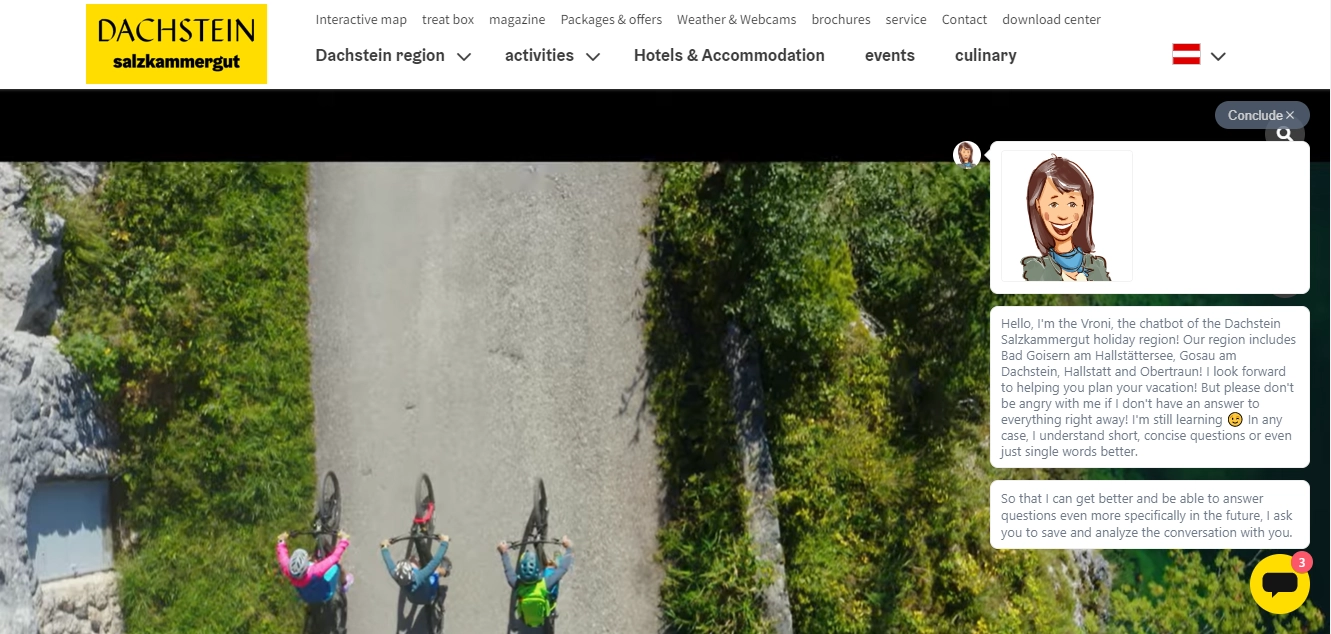
6 tips on building a chatbot for your business
Useful tips on how to improve a chatbot with default answers, user attributes and more.
Chatbots have taken bold strides in the tech space. This journey started from the early stages when language programs proved machines like Parry and Eliza to the tech marvel Alexa. The industry has advanced the concept of human-AI communication and made sure customer interaction runs smoothly. It removed the delay caused by human management and increased business performance by 88%, leading to increased customer satisfaction.
This article has the correct information for building the chatbot you need. So without further ado, let’s begin.
Importance of chatbots
Chatbots are an indispensable piece of technology for the following reasons:
Your company introduction
The chatbot is the first point of interaction between customers and your business. It’s also a touchpoint more effective than email or phone calls, with Hubspot recording 47% of users open to making purchases via a bot. Your chatbot’s personality introduces your brand identity and what you offer to clients. A good example is chatbot Vroni from the travel brand, Dachstein Salzkammergut. Its name and profile picture selection indicate the bot’s receptive personality, which reflects the brand’s identity.

Chatbot Vroni offers help to Dachstein Salzkammergut customers.
Constant availability
Traditional customer service ends the moment your physical staff leaves the office. This work closure doesn’t stop the customers from having queries and sending messages at odd hours. With a chatbot, you get the assurance of being permanently online to address those issues.
Gaining insight into customer behavior
Customer inquiries and questions help you understand their preferences. Chatbots are the perfect way to get this information with the volume of queries they receive. You can also build your bot with specific responses so it can steer customers to give helpful information.
How to build and improve your chatbot
Getting a chatbot and ensuring it performs perfectly are two sides of the same automation coin. To make sure things go smoothly, use these tips:
Stick to your brand’s tone of voice or create one
Tone consistency is the best way to improve brand awareness and trust with your customers. For example, brands like Old Spice have harnessed a recognizable humorous tone for communicating with customers. You can create your brand tone for your chatbot by defining your values and target audience. Then, you can improve the chatbot by creating a style guide for new content over time.
Utilize the default answer feature
Default answers are the automated response your bot gives to a question it can’t recognize. A good example could be “Sorry, I didn’t catch that” or “Could you repeat that?”. When building your chatbot, ensure the default answers are engaged to give users a sense of direction. You can also boost bot performance by coding critical responses that can make users ask better questions about what they want.
For the default answer feature to work, inform the customer that they’re chatting with a bot. This transparency builds trust for your brand while ensuring your customers have multiple choices.
Personalize user experience with user attributes
Every customer wants to feel special when communicating with your brand. It shows that your company cares and is not just out to turn a profit.
User attributes are the information given to each user, making it easier to identify them. In this case, you can address customers by their first name to give them a memorable experience. You can go further by using other attributes like last seen to convince users they’ve been away for too long.
Use keywords and AI
Artificial Intelligence is the ability of a machine to perform tasks that would have required human knowledge and experience. For example, AI allows your bot to simulate a discussion with a user as naturally as possible. You can use this conversational technology on different platforms such as websites, mobile apps, messaging applications, and the telephone.
You can use keywords to trigger your chatbot. You can open the user input section and add the keyword. When the user types in that word, the chatbot becomes active. The conversation will proceed in a way that benefits your business.
You can add more keywords later to prepare for new customer responses. This action will widen the scope of items you can suggest to customers for purchase and answer their most pressing questions.
Build different conversational flows for different users
To build the perfect bot, you need a flow builder. A flow is a path the user takes from the Entry Point through a set of steps to the final action, e.g., a purchase. With different flows for different users, you can attend to unrelated requests at the same time. To create user flows, you need to understand the users' needs and identify the different Entry Points. For example, customers can engage with your Instagram story, which is the Story Reply Entry Point.
When building your user flow, we recommend you understand what you’re trying to achieve. This clarity would serve as an outline for your objectives. All flows are listed on the left, while content appears on the right. You can improve the flow elements (blocks, plugins, and connectors) by connecting all of them to avoid dead ends in the conversation.
Add typing animation
The typing animation will determine how smooth the conversation with the user will be. It also makes the user feel comfortable, like conversing with a fellow human being. A good example is the “typing” and “recording audio” on messengers. You can set the animation speed to give the user time to read the information. Then, if you wish, you can change the speed to fit the user’s response time.
Get your automation with Chatfuel today
With these tips, you can create and improve your Chatfuel bot to communicate with customers naturally. So sign up today and get your 50 free conversations.
